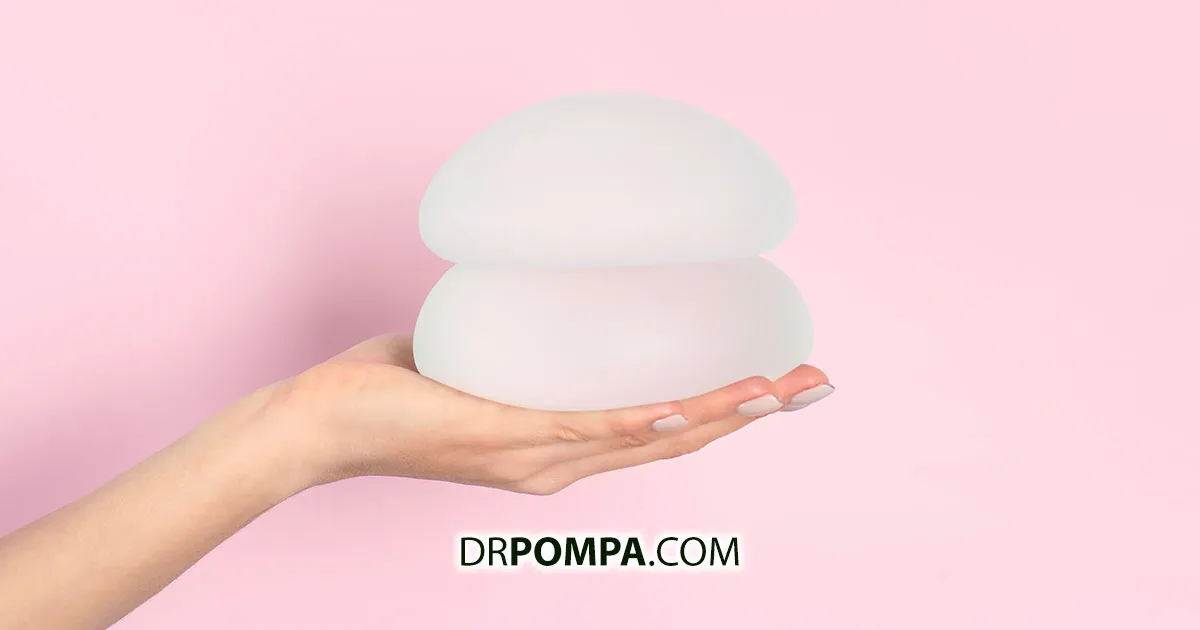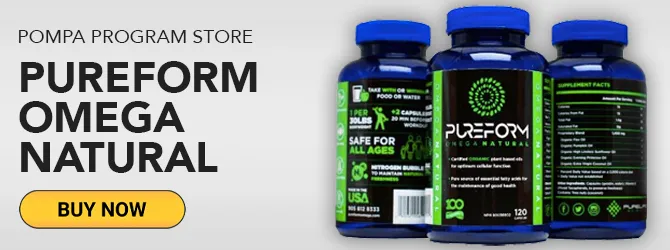The Dangerous Truth About Breast Implants: The illnesses and implications that can stem from breast implants are vast. This operation can drive autoimmunity and affect your mitochondria, effectively harming every aspect of your health, both short and long term. Today we will explore breast implant illness, as well as an in-depth look into reversing it through removal options and a multi-therapeutic approach to detoxing.
Sarah Anne’s Story: Mystery Symptoms
Sarah Anne Stewart grew up in a holistically-minded home. She witnessed her father beat a terminal cancer diagnosis in seven months. He did so by refusing the standard of care and opting to heal himself by doing the physical, emotional, mental, and spiritual work. He’s been cancer-free for over 20 years.
Despite her holistic roots, Sarah was scouted for modeling at the age of 15, which resulted in a childhood of eating disorders that lasted a decade. Ten years into her journey with modeling, Sarah was faced by her doctor who said that if she didn’t quit, she was going to lose her life. Sarah became addicted to Adderal and laxatives. She also became anorexic and bulimic. It was during this time that Sarah also got breast implants, to allegedly help further her career. She felt this enormous discrepancy between the knowledge she had about food as medicine and the way she was treating her body. Sarah decided to quit modeling and go backpacking.
During her travels, she eventually made her way to meditation, mindfulness, and worked on reprogramming her subconscious beliefs.
Despite healing mentally, Sarah also started to become very, very ill.
She had heard about breast implant illness on social media but continued to ignore it, going from doctor to doctor without any answers. Eventually, Sarah started asking doctors about her implants, and time and time again, they would say it had nothing to do with them. Finally, she met a doctor that stressed the importance of removing her implants if she wanted to heal. Within a year, Sarah’s symptoms wholly vanished, and she got her life back.
Sarah has made it her life’s mission to spread awareness about the genuine impact of breast implants on ill health and is helping women all around the world find self-love, safely remove the implants, and heal from the related illnesses. She preaches the importance of doing the inner-work to self-love now because the consequences are lifelong. “Your body's always going to be changing; through pregnancy, through aging, through hormones, through all of these things that we see as we naturally grow older.”
“No matter how well you take care of yourself and pursue anti-aging and longevity tactics: your body is going to change,” she explains. “Why not fall in love with your body right now as it is so that as your body changes, you can continue to love it.”
Breast Implants Can Impact Women Differently
Breast implants can impact different women in different ways, as it influences mitochondria health, hormonal health, and can cause the immune system to attack itself. Although a healthy woman might feel nothing for years, breast implants can prime the canvas for a wide range of problems in time, and compounded with other toxic exposures over time. Breast implants paired with different emotional, chemical, and physical stressors, can create the perfect storm for diseases ranging from autoimmunity, thyroid disorders, and even cancer.
The problem is rooted in mitochondrial health. Mitochondria create ATP, which is essentially energy that enables your body to live. The process of ATP creation also generates waste, which is removed naturally by the body thanks to an enzymatic process. Without those enzymes, the waste begins to bio-accumulate. You can picture the analogy of burning a wood fire for heat: the cell burns fire to create heat (ATP), and the smoke that comes off the fire is the waste. Without the proper evacuation (a chimney), the smoke will build up inside the room until everyone inside dies.
Super oxygen dismutase 2 (SOD2) is one of those agents that enables the body to get rid of waste, and this entire chain is destroyed when we introduce toxic chemicals into the body. Heavy metals inhibit SOD2 production, which interim prevents the body from evacuating the ‘smoke,’ and eventually, we bioaccumulate toxins to the point of cell death.
The type of implant is irrelevant.
Although silicone implants can be more prone to leaking and damage, all types of implants are full of harmful chemicals that have no place in the body. Between 1992 and 2006 silicone was banned by the FDA and removed from the market. Silicone was then re-introduced with more heavy metals and chemicals.
There are over 40 kinds of harmful toxins in silicone breast implants. Some of these toxins include carcinogens like methyl ethyl ketone, cyclohexane, acetone, toluene, xylene, and ethoxide. Silicone also contains heavy metals like aluminum and platinum. These toxins do not need to be ruptured to leak/ leech these toxins into the body– it happens gradually over time. Many of the studies on safety regarding the implants and leakage determined the materials to be safe. However, these studies were conducted at room temperature. The body runs much warmer than room temperature, which tells a different story.
Symptoms of breast implant illness include:
- Brain fog
- Migraines
- Low immune system function
- Hypothyroidism
- Hyperthyroidism
- Unexplained Weight gain or weight loss
- HPA axis dysfunction (adrenal fatigue)
- Insomnia
- Fatigue
- Little or no libido
- Hair loss
- Body aches
- Fibromyalgia-like symptoms
- Poor muscle recovery
- Joint pain
- GI distress and poor digestion
- Puffy ankles or face
- Autoimmune issues
Reversing Breast Implant Illness
Changing breast implant illness requires an exact approach. If not done correctly, removal of implants can cause more harm than good. Leaching toxins must be safely removed. Many women don’t feel the effects of breast implant illness until they go to have their implants replaced. Most plastic surgeons cut into the scar tissue capsule, pull the implant right out of the capsule, and leave the scar tissue inside of the body. Surgeons often think that that scar tissue capsule is beneficial because it adds volume, and they also believe that it's completely benign.
This capsule that often forms around the implant is permanently closing in neurotoxic chemicals like heavy metals, mercury, lead, aluminum, and platinum. When a doctor goes to replace an implant without properly removing this sac of toxins, it can leach into the body and trigger serious illness.
Removing implants alone doesn’t fix breast implant illness. The capsule tissue full of toxins remains in the body, releasing a slow drip of toxins into the body.
Healing Takes Time
Healing isn’t black and white, and real long-term healing requires a multitude of therapies that address the mind, body, and soul. There is no linear way to heal that works for every person. However, this suggested progression can help prepare for the transition into removal surgery. You should always consult with your healthcare professional, and ensure you have the proper guidance. You will need mental and physical support during the process of healing.
Before Implant Removal Surgery
Breast implants are deeply connected to self-worth and body image, so addressing your relationship with yourself is an integral part of pre-surgery healing. The physical symptoms are real, but there is also work to do regarding self-worth.
“Getting breast implants warps your true identity,” explains ex-implant advocate Sarah Anne Stewart. She elaborated that you can't be entirely happy until you're functioning from your real identity. “There's just a non-authenticity that comes about when you're not functioning fully in your identity.” Sarah stresses the importance of reconnecting to your true, unadulterated self before physical healing can commence.
Healing may require going back and taking stock of the people and experiences that have negatively influenced your self-worth, all the way back to childhood. “Looking back on these experiences as an adult, you can re-write your understanding of the lessons you took on as a child,” Sarah explains. Forgiving those involved who may have harmed your sense of self as a younger person, and retrain your brain. Acknowledge the harmful events and begin to tell yourself a new story.
Meditation Practice
Meditation can help by taking you out of the physical body and into the inner self. Starting a meditation practice can help you reconnect with your true nature and divine inner beauty. Meditating can help sever the need to look a certain way. Meditation comes in many forms, from traditional methods of sitting in non-judgmental silence, to mantras, to walking meditations.
Some experts like Dr. Kayte Susse suggest being mindful of detoxing too actively before breast implant removal surgery. Specific techniques, such as infrared sauna therapy can cause implants to release toxins into the body. After addressing the mental health aspect of breast removal surgery, opt to remove them before embarking on a massive detox protocol.
Breast Implant Removal Surgery
The removal process plays the most significant role in ensuring you reclaim your health. Breast implant removal surgery can cause more problems if done improperly. The proper technique is en bloc which means that you’re removing the implant and the capsule together at the same time. You are not cutting open the capsule, pulling the implant out, and leaving that capsule in there. The capsule contains a lot of toxins, a lot of microbes, potentially even cancerous cells that could then go floating around through your lymph nodes.
An en bloc procedure will prevent future exposure and ensures that you have a complete capsulectomy. A capsulectomy means that every last bit of that toxic capsule is removed. Some surgeons will deter patients from the procedure because it requires a specific skill, and not every surgeon is trained to perform it. The method is very safe when performed by a skilled surgeon.
Unfortunately, it happens that women go in for an en bloc with a capsulectomy procedure and don’t receive a full removal. It’s important women get informed about the nature of the process and that they trust their surgeon. There are various groups online, including Sarah Phillipe’s Reversing Breast Implant Illness facebook group that provide resources to find a qualified doctor.
After Breast Implant Removal Surgery
Although working on mental health before breast implant removal surgery, it remains equally essential afterward. You may have distorted self-image due to years of artificial breasts, so the work ought to continue post-surgery. Surrounding yourself with supportive loved ones is one key to this transition. Joining a community of others who have undergone an explant surgery can help too.
Sarah Anne explains that “we also need to empower other women to make choices based on their health. When I got my implants out, 90% of the questions were, “How do they look? Are they saggy? Do you have scars? Do you like your doctor? Did she do a good job?” While maybe 5% of the questions were, “How are you feeling? Are you feeling better? Are your symptoms gone?” The focus needs to be continuously re-directed toward health.
Post-removal surgery also opens up the door to start a safe and effective multi-therapeutic approach to detoxification.
Detoxification
Toxins bioaccumulate in the body when the toxic burden is more significant than the rate at which the body can rid itself from these substances. Before detoxing, address the common sources of toxins.
Some of these toxins include:
- Mold
- Heavy metals in amalgam fillings
- Cavitations from root canals or wisdom tooth extraction
- Pesticides and herbicides in food
- Toxic body care products
- Poisonous household cleaning product
Once you have removed these sources from your life, it’s time to start detoxing the body at the cellular level. Like removing implant improperly, detox can be harmful if it isn’t done in a smart and safe progression.
PompaCore Cellular Detox
There are three main components that set apart a real detox from a harmful one:
- Applying the 5 R's principles as a roadmap to fix the cell
- Opening and supporting critical detox pathways
- Utilizing real binding agents to remove toxins from the cell
The first component is that all detox must address toxins at the cellular level.
- R1 – Removing the Source
- R2 – Regenerating the Cell Membrane
- R3 – Restoring Cellular Energy
- R4 – Reducing Cellular Inflammation
- R5 – Reestablishing Methylation
The second component is opening up the downstream detox pathways.
After the cell detoxifies the matter, there is an entire team of organs and channels required to help these toxins safely exit your body. Your gut, liver, and kidneys are the leading players here, and if they are not opened up (functioning correctly), real danger can occur. One of these dangers is autointoxication, whereby you start to recycle and reabsorb the toxins.
The third component is using real binders.
Unlike cilantro and chlorella (which are very weak binders), a real binder will hold on tight to the toxins. Weak binders mostly pull chemicals out of the body and then drop them somewhere else, which wreaks havoc on the system.
The Three Phases
Now that you understand the three components, we can explore the three phases of detox. Simply diving in without a plan won’t yield the best results, and might even be dangerous. These three phases ensure a smooth, safe, transition to help support the body through the detox.
These phases include (1) a preparatory step, (2) a body phase, and (3) a brain phase. The prep phase targets the detox pathways above to support and upregulate the cell function. The body phase is when we introduce a powerful binder to move toxins from areas of higher concentration to lower concentration. The body phase is introduced before removing toxins from deeper tissues, such as the brain. And finally, the brain phase is when we add a fat-soluble agent to support neurotoxin elimination. This final phase is the key to why so many “have tried everything” and still don’t feel well. The final phase is also a key to resolving the current hormone imbalance epidemic.
Cellular detoxification is needed by just about everyone—but it’s especially necessary in conjunction with breast implant illness.
Our world contains more chemicals and stresses than ever before, and whether it’s internal sources (like breast implants) or external sources like metals in our water, air and so on— our bodies are struggling to keep up.
That’s why the best route is the 90 Day PompaCore Cellular Detox™ system — which includes the world’s leading detox formula, CytoDetox. This entire process is specifically designed to support the detoxification organs, detox the cells, and remove toxins from your body and brain.
The 3 phases of PompaCore Cellular Detox (prep, body, and brain) were formulated to heal the trillions of cells in your body and decrease chronic inflammation.
Your body has its own innate ability to detoxify.
To get well, you simply need to support your detox — which is what the PompaCore Cellular Detox process (with CytoDetox) helps you do.
References
Adams, Simon T, Julie Cox, and G Sam Rao. “Axillary Silicone Lymphadenopathy Presenting with a Lump and Altered Sensation in the Breast: a Case Report.” Journal of Medical Case Reports3, no. 1 (October 2009). https://doi.org/10.1186/1752-1947-3-6442.
Balk, Ethan M., Amy Earley, Esther A. Avendano, and Gowri Raman. “Long-Term Health Outcomes in Women With Silicone Gel Breast Implants.” Annals of Internal Medicine164, no. 3 (October 2015): 164. https://doi.org/10.7326/m15-1169.
Brawer, A E. “Destiny Rides Again: the Reappearance of Silicone Gel-Filled Breast Implant Toxicity.” Lupus26, no. 10 (2017): 1060–63. https://doi.org/10.1177/0961203317690241.
Brawer, Arthur E. “Breast Implant Toxicity.” Annals of the American Thoracic Society13, no. 6 (2016): 992–93. https://doi.org/10.1513/annalsats.201601-036le.
Brawer, Arthur. “Mechanisms of Breast Implant Toxicity: Will the Real Ringmaster Please Stand Up.” The International Annals of Medicine1, no. 9 (June 2017). https://doi.org/10.24087/iam.2017.1.9.249.
“Breast Implant Illnesses: What's the Evidence?” National Center for Health Research, September 6, 2019. http://www.center4research.org/breast-implant-illnesses-whats-evidence/.
“Breast Implants: The View From the FDA.” Medscape, July 17, 2013. https://www.medscape.com/viewarticle/807689_2.
Breiting, VB, LR Holmich, and B Brandt. “Long-Term Health Status of Danish Women with Silicone Breast Implants.” Plastic and Reconstructive Surgery, 2004. https://www.ncbi.nlm.nih.gov/pubmed/15220596.
Brinton, L. “Cancer Risk at Sites Other than the Breast Following Augmentation Mammoplasty.” Annals of Epidemiology11, no. 4 (2001): 248–56. https://doi.org/10.1016/s1047-2797(00)00223-4.
Brinton, L. A. “Risk of Connective Tissue Disorders among Breast Implant Patients.” American Journal of Epidemiology160, no. 7 (January 2004): 619–27. https://doi.org/10.1093/aje/kwh272.
Center for Devices and Radiological Health. “Breast Implants – FDA Breast Implant Consumer Handbook – 2004 – TIMELINE OF BREAST IMPLANT ACTIVITIES.” Wayback Machine. Center for Devices and Radiological Health. Accessed September 10, 2019. https://web.archive.org/web/20170118090812/http://www.fda.gov/MedicalDevices/ProductsandMedicalProcedures/ImplantsandProsthetics/BreastImplants/ucm064242.htm.
Commissioner, Office of the. “Statement from Binita Ashar, M.D., of the FDA's Center for Devices and Radiological Health on Agency's Commitment to Studying Breast Implant Safety.” U.S. Food and Drug Administration. FDA. Accessed September 10, 2019. https://www.fda.gov/NewsEvents/Newsroom/PressAnnouncements/ucm620589.htm.
“DeLauro Calls for Investigation into Safety of Breast Implants.” Congresswoman Rosa DeLauro, August 16, 2013. https://delauro.house.gov/media-center/press-releases/delauro-calls-investigation-safety-breast-implants.
“Holistic Health Coach.” Sarah Anne Stewart. Accessed September 10, 2019. https://sarahannestewart.com/.
“Home: Now Wellness Collective.” Dr Kayte. Accessed September 10, 2019. https://www.drkayte.com/.
Hölmich, Lisbet R. “Incidence of Silicone Breast Implant Rupture.” Archives of Surgery138, no. 7 (January 2003): 801. https://doi.org/10.1001/archsurg.138.7.801.
Johnstone, Bruce, Katrina Read, and Wendy Dick. “Poly Implant Prothèse Silicone Breast Implant Rupture, Gel Bleed and Fatigue in a ‘Blinded’ Patient.” ANZ Journal of Surgery83, no. 3 (2013): 192–93. https://doi.org/10.1111/ans.12057.
Koot, V C M. “Total and Cause Specific Mortality among Swedish Women with Cosmetic Breast Implants: Prospective Study.” Bmj326, no. 7388 (August 2003): 527–28. https://doi.org/10.1136/bmj.326.7388.527.
Krishnamurthy, S. “Pathology of Regional Lymph Nodes.” Breast Cancer, 2005, 137–44. https://doi.org/10.1016/b978-0-443-06634-4.50014-5.
Macrae, Fiona. “Thousands of British Women in Dangerous Breast Implants Alert.” Daily Mail Online. Associated Newspapers, June 18, 2010. http://www.dailymail.co.uk/health/article-1287564/Thousands-British-women-dangerous-breast-implants-alert.html.
Miglioretti, Diana L. “Effect of Breast Augmentation on the Accuracy of Mammography and Cancer Characteristics.” Jama291, no. 4 (2004): 442. https://doi.org/10.1001/jama.291.4.442.
“Report of the 2017 Statistics.’ American Society of Plastic Surgeons (ASPS).” ASPS. Accessed September 10, 2019. https://www.plasticsurgery.org/documents/News/Statistics/2017/plastic-surgery-statistics-report-2017.pdf.
Sanchez-Guerrero, J, and M H Liang. “Silicone Breast Implants and Connective Tissue Diseases.” Bmj309, no. 6958 (January 1994): 822–23. https://doi.org/10.1136/bmj.309.6958.822.
“Symptoms and Complications from Silicone Gel Breast Implants FDA's October 2003 Summary of Research on Inamed Implants.” Breast Implant Information, December 4, 2018. https://breastimplantinfo.org/symptoms-silicone-gel-breast-implants-fdas-2003-inamed-implants/.
Watad, Abdulla, Vered Rosenberg, Shmuel Tiosano, Jan Willem Cohen Tervaert, Yarden Yavne, Yehuda Shoenfeld, Varda Shalev, Gabriel Chodick, and Howard Amital. “Silicone Breast Implants and the Risk of Autoimmune/Rheumatic Disorders: a Real-World Analysis.” International Journal of Epidemiology47, no. 6 (2018): 1846–54. https://doi.org/10.1093/ije/dyy217.












